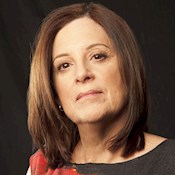- DataArts News
The Adelaide Model: Time to Invest in the Arts
- Posted Apr 21, 2020
Karen Brooks Hopkins serves both as an intellectual partner and counsel, working with SMU DataArts' leadership on the critical issues prevalent in the arts and culture field, as well as an ambassador for the research center.

I returned to New York on March 11th from a month-long trip to Australia, just days before the city shut down due to the coronavirus. Now as we all struggle to make sense of life in these new circumstances, I want to reflect on cultural lessons learned “Down Under.”
The city of Adelaide, a small enclave (population 1.346 million) in Southern Australia, is literally a cultural mecca. I was visiting there as a guest of the Adelaide Festival and my role was to lead several talks on fundraising and leadership. Of course, it was great to meet arts administrators from around the country and to hear their stories, but beyond these worthy interactions, I was amazed by the decision this town has made to define its character and economy by immersing itself in arts and culture.
Adelaide has as many as 26 separate festivals going on year-round. Their Fringe Festival, which looks like a mini-city itself, vibrates with energy, food, artists and installations everywhere. In the city, vendors and shops are selling, artists are performing, markets are packed, hotels are filled to capacity and the street life and vibe inside the theaters is completely in sync. In other words, there is no sense of only the wealthy in the theaters and everyone else outside.
In Adelaide, everyone is both seeing shows and socializing. The festivals range from performing to visual arts, from a children’s event to history, film and LGBT-oriented programs. I believe that the Adelaide Festival, as a model, is worthy of study and data collection. If we are to survive and thrive as a field, we must embrace both philanthropy and investment. Of course, we will always raise money and sell tickets! But, if we can prove and demonstrate that investing in the arts is good business for communities of all sizes, we will open the door for new desperately needed resources.
When this crisis ends, we must double down and prove our value. Let’s explore the possibilities of impact investing and demonstrate that every town can and should be a center for art.

Karen Brooks Hopkins
Nasher Haemisegger Fellow with SMU DataArts
“Arts and cultural organizations do not exist in a vacuum, they exist as part of the fabric of their communities.”


